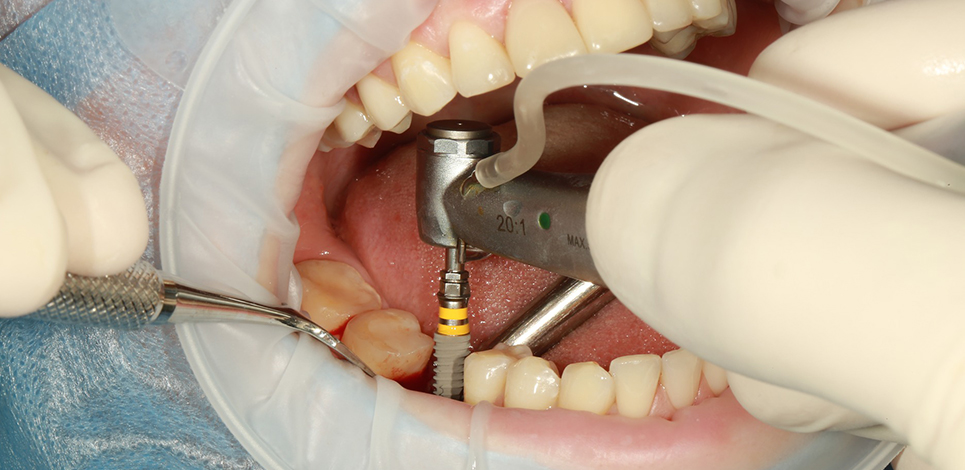Implants
The clinic uses two types of Implant Systems:
- BICON
- Implant system Bio3
The most commonly used Bicon System is described below:
Introduction to Bicon Implants
THE BICON IMPLANT was designed to restore dentitions without using screws. For this reason, clinicians, technicians, and patients do not experience the limitations and frustrations inherent with the use of screws.

The Restorative Dentist
THE BICON IMPLANT was designed to restore dentitions without using screws. For this reason, clinicians, technicians, and patients do not experience the limitations and frustrations inherent with the use of screws.
The Restorative Dentist
The Bicon System, with its 360˚ of universal abutment positioning and sloping shouldered implant, offers clinicians the ability to consistently provide gingivally aesthetic restorations. Bicon’s restorative techniques can be conventional or revolutionary with the cementless and screwless Integrated Abutment Crown™ (IAC). Bicon restorative crown techniques routinely take less chairtime than those for natural teeth.
The Surgical Specialist
In addition to more predictable and versatile placement techniques, Bicon’s design provides a bacterially-sealed implant to abutment connection. Bicon SHORT® Implants afford simpler and consistently more predictable treatments, which can significantly increase a patient’s acceptance of implants.
The Patient
The Bicon System allows the dentist to consistently offer functional and gingivally aesthetic restorations to patients, so that they may truly enjoy implant prostheses that look and feel like natural teeth. Additionally, the odors and tastes associated with screws are avoided.
Many implant systems require the fabrication of expensive customized abutments. With the Bicon System, technicians receive a conventional or implant-level transfer impression from which a porcelain fused to metal crown, all-ceramic crown, or fixed and removable overdenture prostheses can be simply fabricated. For the ultimate in flexibility and aesthetics, the cementless and screwless Bicon Integrated Abutment Crown™ (IAC) can also be fabricated.
The Bicon Design
The Bicon System was designed not as a research project to study osseointegration, but rather as a means to restore dentition. Bicon’s unique 1.5˚ locking taper implant to abutment connection follows sound bioengineering principles and provides for 360˚ of universal abutment positioning. Bicon’s implant to abutment connection also has been definitively proven to be bacterially sealed.
The implant’s elegantplateaued design provides for cortical-like bone with central vascular systems around the implant. This cortical-like bone not only grows faster, but also provides for functionally different capabilities than the appositional bone around non-plateaued implants. The implant’s sloping shoulder provides sufficient space for the interproximal papillae, which are crucial for gingivally aesthetic restorations.
Since its introduction in 1985, the Bicon design has benefited from a sensible biological width, which is only now—over 20 years later—being promoted as platform switching. For these reasons, Bicon clinicians and their patients do not experience the frustrations and limitations inherent in other implant designs.

Restorative Flexibility
Single and Multiple Crowns

7 Years Post Implant Placement
Overdentures

3 Years Post Implant Placement
Full Mouth Restorations

2 Years Post Implant Placement


